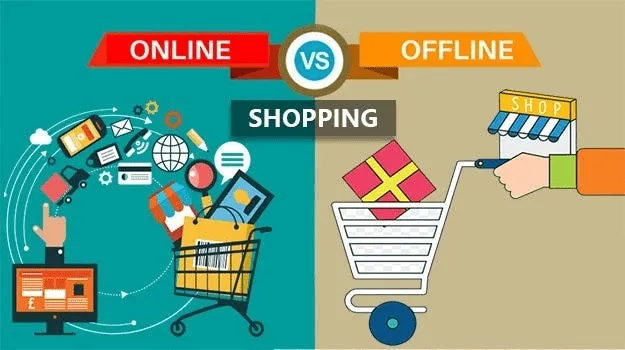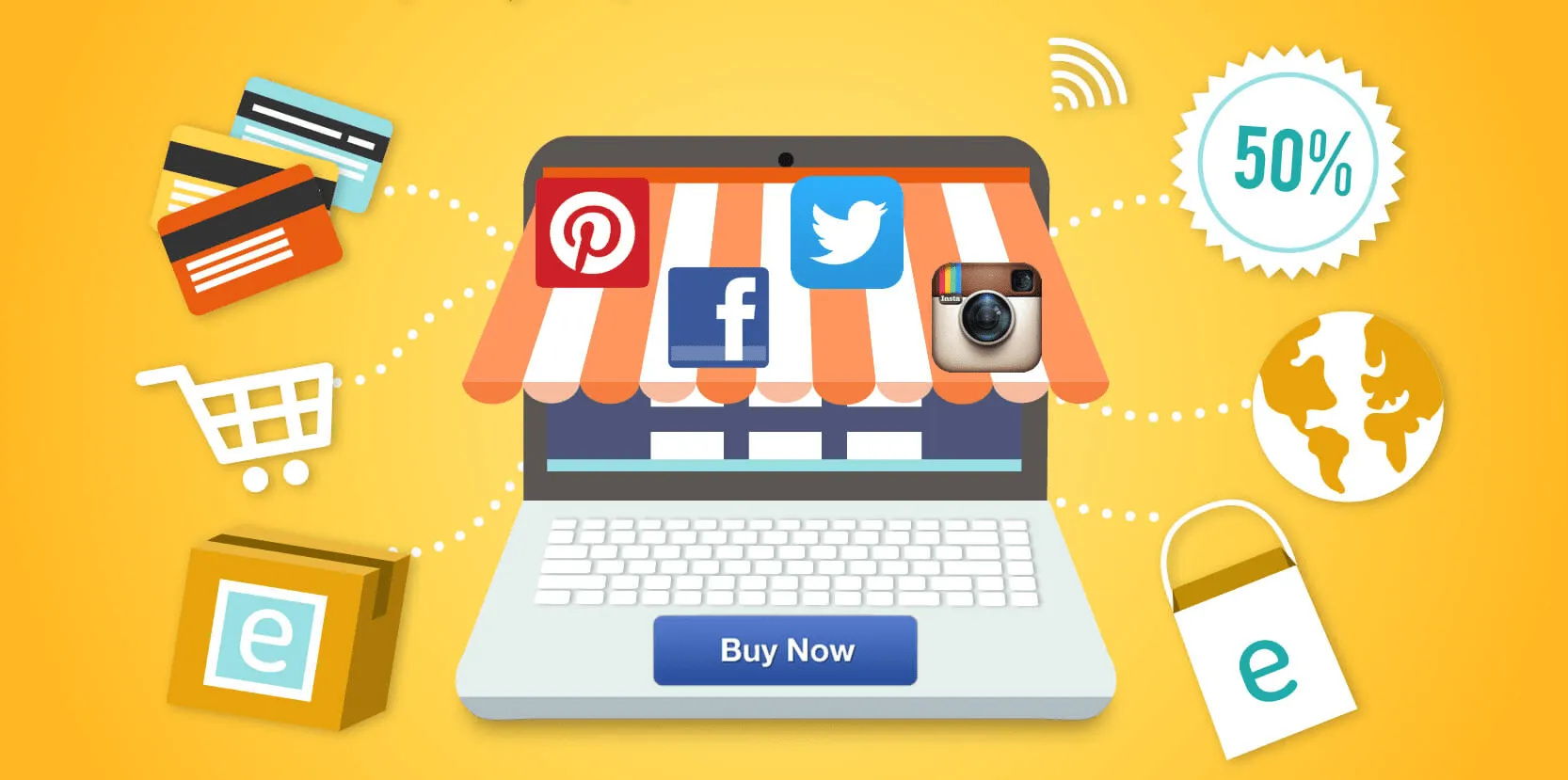Learning how to sell doesn’t have to feel like guesswork. Whether you're trying to sell products online, approach a potential customer, or improve your sales process, it all starts with understanding people.
According to HubSpot, 75% of salespeople say closing more deals starts with better knowledge of customer needs. That means before pitching anything, you need to know who your target customer is and what they actually care about.
In this guide, we’ll walk through simple, proven steps you can use to connect with potential buyers — online, in person, or wherever you’re selling.
What is the Sales Process and Why is it Crucial?

The sales process is simply the step-by-step journey a salesperson follows to guide a prospective customer from interest to purchase. It's not about pushing a product or service—it's about solving a real problem for someone who needs it.
Think of it as a structured path that helps you manage every interaction, from that first hello to the final handshake (or click). A good sales strategy gives you a way to stay consistent, track progress, and adjust based on real conversations.
Whether you sell from an online store or a brick and mortar store, this process keeps you focused on what actually moves the deal forward.
💡 So, Why Is the Sales Process Crucial?
- It helps you understand your buyer persona
- When you know your target customers, you can personalize your message instead of guessing what to say.
- It makes your sales pitch more relevant
- You’re not just listing product’s features — you’re connecting them to the customer’s real pain points.
- It improves your sales performance
- Repeating what works helps your team grow. Tracking sales tactics across your pipeline also shows what’s stalling deals.
- It helps you gather customer data and insights
- Data shows what your prospective customers care about. This helps with better online research and decision-making.
- It builds better relationships
- You're not selling to a name on a list. You're stepping into the customer’s shoes, learning what makes them say yes.
According to Salesforce, high-performing teams are 2.3x more likely to use a well-defined sales process than underperforming ones.
That’s not just a stat — it’s a reminder to treat your sales process like your roadmap, not a script.
How to Sell Effectively and Where to Start?

Selling well isn’t about clever tricks or using big words. It’s about understanding people and making sure your offer actually solves something they care about. Before you write your sales pitch or build out a selling platform, you need to start with the basics.
Take a moment to step into your target market. What are they trying to fix, change, or avoid? Great sellers don’t push — they help people make informed decisions with confidence.
Let’s break down where to start:
🔍 1. Identify Your Buyer’s Real Needs
- Get into your buyer personas and target audience.
- Listen for pain points in their language, not yours.
- Don’t assume — ask real questions and gather information.
"The best salespeople aren’t always closing. They’re learning." – Dale Carnegie Training
📊 2. Conduct Effective Pre-Sale Research
- Use online research to find what competitors’ products your buyers are already using.
- Look at customer satisfaction reviews to spot what’s missing.
- Check their social media pages — people reveal a lot without saying it directly.
💬 3. Build Genuine Customer Relationships
- Focus on building rapport, not just the sale.
- Don’t forget the existing customers — they often buy again.
- Use every call or message to understand your customer base better.
HubSpot reports that 93% of customers are more likely to make repeat purchases from businesses that provide excellent customer service.
❓ 4. Ask Powerful Sales Questions
- Tailor your approach for prospective buyers and new customers.
- Let them talk. The more they share, the easier it is to offer value.
- Remember, it’s not about selling. It’s about seeing through the customer’s eyes.
👂 5. Become a Better Listener
- Drop the script and actually hear them.
- Ask follow-ups when a customer asks something unclear.
- It builds trust and gives you real-time feedback on what matters.
🧠 6. Leverage Psychological Triggers in Selling
- Use logic and the rational mind.
- Small tactics like urgency or social proof help — but only if used honestly.
- In business to business settings, focus on how your solution reduces risk.
When you start here, you’re not just trying to sell online or in-store — you’re learning to become a good salesperson. And that’s a skill that works across any services, products, or industries.
Who Are Your Potential Customers and How to Win Them?

Before trying to sell anything, you need to understand who you’re selling to. Your potential customers aren’t everyone — they’re the people who actually need or want your product or service. The more specific you are, the easier it is to connect with them.
🔍 How Do You Identify Your Ideal Customer?
You can’t connect with someone you don’t know. That’s why defining your ideal customer is step one.
- Study your current customer base
- Who keeps coming back?
- What do they value most about your offer?
- Build strong buyer personas
- Include goals, pain points, and objections.
- Consider where they shop — online marketplace or brick and mortar?
- Watch what other brands are targeting
- Look for gaps they’re missing.
🗣️ How Can You Speak Persuasively When Selling?
Speak like a person, not a pitch deck. The goal is to be clear and relatable — not clever.
- Use language your target audience actually uses
- Match your tone to their energy (especially in email marketing)
- Share insights — people trust those who gain insights, not just give advice
"People don't buy what you do; they buy why you do it." – Simon Sinek
🎯 How to Convince Customers to Buy Your Product?
Convincing isn't about pressure — it’s about relevance. If they believe it solves a real problem, they’ll listen.
- Highlight value over lower price
- Show how your solution saves them own time
- Use real outcomes or stories, not just product ideas
💬 What Should You Say to Attract More Customers?
Your words should show you’re genuinely interested, not just trying to make a sales pitch.
- Ask about their goals — not just what they want to purchase
- Use authentic reviews (social proof helps)
- Make your message feel personal, not templated
According to Salesforce, 80% of customers say the experience a company provides is as important as its product.
When you encourage people through clarity, care, and purpose, you don’t just get attention — you get trust. And trust is what makes people customers, not just prospective buyers.
How to Price Your Product and Close Deals Successfully?

Pricing isn’t just about picking a number. It’s about understanding what your target customers are willing to pay — and what they actually value. A strong price strategy can help you close faster and attract the right buyers.
💰 How to Set the Right Price for Your Product?
Start by looking at the product’s actual value, not just the cost. Then factor in what makes your offer different from other brands.
- Study your product idea carefully
- Know its strengths, weaknesses, and what customers buy it for
- Research the market
- Compare pricing from your competitors’ products
- Consider how your brand’s identity influences perceived value
- Include presentation costs
- Don’t forget packaging materials, support, and delivery
According to McKinsey, companies that actively manage pricing see a 2–7% increase in return on sales.
🤝 What Are Proven Strategies to Close a Deal Fast?
A good price won’t work if your closing strategy falls flat. Timing, confidence, and clarity matter.
- Show urgency, not pressure
- Offer a third option if they’re unsure
- Use clear language during the close
- Practice your sales skills to sound confident, not scripted
- Always keep key details handy
- A business card, quote, or quick breakdown makes you look sharp
- Position yourself as a sales expert, not just a rep
- Even sales reps can lead like pros when they understand the product well
“People don’t like to be sold to, but they love to buy.” – Jeffrey Gitomer
How Can You Master In-Person Selling?

In-person selling gives you something online can’t — direct connection. But it also means you have to read people and respond in real time. Here’s how to do it well without sounding scripted or salesy.
1. Make a Strong First Impression
The first few seconds matter. People often decide how they feel about you before you even speak.
- Dress clean, stay calm
- Greet confidently and be yourself
- Smile and offer a firm handshake
"You never get a second chance to make a first impression." – Will Rogers
2. Demonstrate Product Value Clearly
Don’t overload them with features. Show how your product actually helps.
- Focus on outcomes, not just specs
- Tie it to a real use case they can relate to
- Use simple comparisons when needed
3. Use Body Language Effectively
Your gestures and posture say more than you think.
- Use body language that shows openness — avoid crossing arms
- Nod to show engagement
- Mirror their posture subtly to build comfort
4. Maintain Eye Contact and Confidence
Looking someone in the eye shows honesty and presence.
- Don’t stare — keep it natural
- Break contact occasionally to avoid discomfort
- Speak with a steady tone
5. Handle Customer Objections Smoothly
Don’t rush to defend. Listen first.
- Acknowledge concerns without getting defensive
- Ask follow-ups to clarify
- Use facts, not pressure
“Sales objections are a natural part of sales, and preparedness for them is crucial.”
6. Provide Hands-On Product Experiences
Let them touch, try, or test if possible. People trust their own experience more than your words.
- Use a demo or sample
- Let them explore freely while you stay available
- Answer questions in the moment
7. Create a Comfortable Environment
Your goal is to help them feel safe and heard.
- Remove distractions when talking
- Keep the tone light and friendly
- Build real connection, not just a pitch
This is where building relationships comes into play — even in short meetings.
8. Close the Sale Naturally
A smooth close feels like the next logical step, not a twist ending.
- Summarize what they liked
- Ask if they feel ready to move forward
- Give them space to say yes
9. Follow Up After the Interaction
Even if they don’t buy right away, keep the conversation open.
- Send a polite follow-up message
- Share useful, up to date information
- Stay available for future needs
According to Harvard Business Review, 56% of customers are more likely to buy when follow-ups feel helpful, not pushy.
How to Start Selling Products Online Like a Pro?

Selling online allows entrepreneurs to sell products or services to anyone, anywhere. Online sales isn’t about having the fanciest store. It’s about making it easy for someone to find, trust, and buy your product.
Let’s break it down step by step so you can get your first online sales going with confidence.
1. Pick the Right Platform
Not all platforms work for all products. Choose one that matches your business size and customer needs.
- Shopify for full control
- Amazon or Etsy for ready-made traffic
- Match platform to your pricing and product type
2. Build a Simple Store
Clunky websites lose customers fast. You want your store to be clean, quick, and easy to use.
- Mobile-responsive design
- Clear navigation menus
- Easy-to-find search and filter tools
3. Set Up Easy Payments
If checkout feels frustrating, buyers bounce. Keep it smooth and trustworthy.
- Offer common payment options (credit, PayPal, UPI)
- Use secure gateways like Stripe
- Show trust badges at checkout
4. Build Trust Fast
If people don’t trust you, they won’t buy. This needs to happen quickly.
- Add real reviews or testimonials
- Show return/refund policies clearly
- Include an About page and contact details
"Trust is built with consistency." – Lincoln Chafee
5. Use Great Product Photos
Photos are the first thing people notice. Make them count.
- Use high-res images with good lighting
- Show multiple angles
- Include size/context comparisons
6. Write Better Descriptions
People don’t just want features — they want benefits.
- Focus on how the product helps
- Use short bullets for clarity
- Add common FAQs in the copy
7. Make It Personal
Personal touches keep people engaged longer.
- Recommend related items
- Use names in follow-up emails
- Share stories behind the products
8. Use Retargeting Wisely
Not everyone buys the first time. But many return if reminded well.
- Run ads to visitors who didn’t purchase
- Offer limited-time deals in reminders
- Use warm, not pushy, messages
According to Barilliance, retargeting emails average a 41% open rate, much higher than regular campaigns.
Quick Sales Checklist: Online vs. Offline Selling

If you're selling online or offline, it's easy to get lost in all the moving parts. Sometimes, just having a clear view of what to focus on can save time, stress, and missed opportunities.
So instead of overthinking every step, here’s something simple to help you stay organized and on track — especially when you're switching between channels.
How to Sell on Social Media Effectively?

Social media is more than just posting. If used right, it's a direct line to people who are already interested in what you offer. But selling here takes more than likes — it takes trust, timing, and a clear plan.
1. Build a Powerful Brand
Your page should feel consistent — same tone, look, and values.
- Use the same profile image across platforms
- Keep your bio short and clear
- Post regularly, not randomly
2. Leverage Paid Ads
Even a small budget can go far with the right ad.
- Target by location, interest, or behavior
- Test different visuals and messages
- Track performance weekly
“People don’t shop on social; they scroll. Good ads stop the scroll.” – Neil Patel
3. Use Influencer Marketing
People trust people — not brands.
- Partner with niche creators
- Ask for honest reviews, not scripts
- Track content engagement, not just reach
4. Try Social Commerce Features
Let people buy without leaving the app.
- Set up Instagram Shop or Facebook Store
- Tag products directly in posts
- Offer one-click checkout. With checkout anywhere, customers can complete their purchase from any page with ease.
Social commerce sales will hit $80 billion in the U.S. by 2025.
What Should You Say to Sell Your Product Easily?

What you say matters — but how you say it makes the difference. The goal isn’t to sound clever, it’s to be understood. Let’s keep it simple and human.
1. Highlight the Biggest Customer Benefits First
Start with what matters to them — not what excites you.
- Lead with results, not features
- Focus on how life improves with the product
- Make it about their time, money, or peace of mind
2. Keep Your Message Simple and Clear
Clarity beats creativity when selling.
- Use everyday words
- Cut jargon or technical phrases
- Keep sentences short
3. Address Customer Pain Points Directly
Make them feel seen.
- Name the real struggle they’re having
- Show that you understand it deeply
- Offer the product as a useful solution
“Understanding customer pain points allows for better alignment of product value propositions.”
4. Use Real-Life Examples and Testimonials
Stories stick. Stats are good, but people remember people.
- Share how others used it successfully
- Include short customer quotes
- Keep it believable and specific
5. Create a Sense of Genuine Urgency
No fake pressure — just real reasons to act.
- Limited-time bonuses
- Low inventory updates
- Emphasize value now vs. later
6. End with a Strong Call-to-Action
Be clear about what happens next.
- “Order now,” “Start your free trial,” or “Book a call”
- Only one CTA per pitch
- Make it feel easy
According to Unbounce, CTAs with personalized text convert 202% better than generic ones.
Which Sales Methodology Should You Use?

Not every buyer responds the same way, and not every sale is made the same way. That’s why knowing a few proven sales methodologies helps you pick the right approach for the person in front of you. Let’s break down five solid options you can use depending on the situation.
1. SPIN Selling for Complex Sales
SPIN stands for Situation, Problem, Implication, and Need-payoff.
- Use when: Selling expensive or multi-step products or services
- Focus on: Asking smart questions to guide the buyer toward their own realization
- Why it works: It builds logic before pitching anything
“Telling isn’t selling. Ask questions instead.” – Neil Rackham (creator of SPIN Selling)
2. Solution Selling for Customer-Centric Deals
This approach works best when buyers know what their problem is, but need help solving it.
- Use when: You’re walking someone from problem to product
- Focus on: Listening, then positioning your offer as the fix
- Why it works: People feel heard, not pitched
3. Consultative Selling to Build Trust
You act more like an advisor than a salesperson here.
- Use when: Your product needs some customization or explanation
- Focus on: Building trust before selling anything
- Why it works: You're solving with them, not at them
“A consultative sales approach focuses on guiding the prospect to the right product by addressing their needs rather than pushing for a sale.”
4. Challenger Selling for Insight-Led Approaches
This method challenges the buyer’s assumptions.
- Use when: You know more about the solution than the buyer does
- Focus on: Teaching, tailoring, and taking control of the conversation
- Why it works: It flips the expert script in your favor
According to CEB, Challenger reps outperform others by 14% in complex sales environments.
5. Value-Based Selling to Highlight ROI
This isn’t about features or even benefits — it’s about outcomes.
- Use when: ROI or financial impact matters to the buyer
- Focus on: Showing the long-term value, not just the price
- Why it works: Buyers think in cost vs. gain — you help them see the gain
What Tools Can Help You Sell Better?

Having the right tools can take a lot of pressure off the sales process. You don’t need to juggle ten spreadsheets or chase cold leads manually anymore. Let’s explore tools that can actually help you sell smarter, not harder.
1. CRM Platforms for Managing Sales
CRMs help you track interactions, manage follow-ups, and stay organized with every prospective customer.
- Zoho CRM – Great for small and medium businesses; offers workflows, reports, and custom fields.
- Salesforce – Ideal for large teams; powerful with integrations and detailed forecasting tools.
“You can't manage what you don't measure.” – Peter Drucker
2. AI Tools for Sales Insights
AI tools pull patterns from your customer data and give you real-time recommendations.
- HubSpot – Built-in AI for content, lead scoring, and pipeline management.
- Zoho Zia – Predicts deals most likely to close and suggests next steps.
3. Prospecting and Lead Generation Tools
These tools help you find potential buyers and move them into your funnel.
- Pipedrive – Clean interface and visual pipeline for deal tracking.
- Nimble – Combines social insights with contact management to build buyer personas.
4. Email Automation Tools
Email tools let you keep in touch without sounding robotic — especially when using smart sequences.
- Alore: Outbound Sales Automation Built for Results

Alore helps you manage every step of your outbound sales — from finding leads to booking meetings. It’s especially useful for B2B teams and SDRs who want better response rates and cleaner inboxes.
- AI-Powered Email Sequences – Personalize cold outreach at scale
- Email Warm-up – Improve deliverability and avoid spam folders
- Lead Management – Segment and organize your leads across your campaigns
- Shared Inbox for Teams – Collaborate on replies, track opens, and assign follow-ups
- Reporting & Analytics – Know what’s working, tweak what isn’t
Other tools to consider:
- Mailchimp – Best for marketing teams with campaigns, A/B tests, and drag-and-drop email builders.
- Lemlist – Popular among startups for video and dynamic image personalization.
“Companies using marketing automation see 53% higher conversion rates.” – Aberdeen Group
5. Sales Analytics and Reporting Tools
Good analytics help you make informed decisions, not guesses.
- Microsoft Power BI – Combine and visualize data from multiple sales tools.
- Tableau – Deep dive into your numbers with interactive dashboards.
Common Sales Mistakes You Should Avoid

Everyone makes mistakes — but in sales, a few small habits can silently kill your results. Most of them are avoidable if you spot them early. Let’s go over the biggest ones and how to fix them.
1. Talking More Than Listening
When you’re too focused on your pitch, you miss what the customer is actually saying. And if you’re not listening, you can’t solve their real problem. Good sales isn’t about talking — it’s about asking.
How to avoid it:
- Ask open-ended questions
- Let them talk without interrupting
- Summarize what they say to show you heard it
“Effective listening makes prospects feel valued and can foster loyalty.”
2. Ignoring Customer Feedback
Brushing off feedback—especially negative—makes customers feel dismissed. That one experience could lead to a lost sale or a bad review. Feedback is a mirror, not a personal attack.
How to avoid it:
- Ask for input regularly
- Thank them for honesty, even when it stings
- Use recurring complaints to improve your offer
3. Overpromising to Close Deals
Saying “yes” to everything just to land the deal will backfire. When reality doesn’t match expectations, trust is broken. Long-term relationships come from honesty.
How to avoid it:
- Be upfront about limitations
- Sell what your product does — not what it might do later
- Document promises and deliverables
4. Being Unprepared for Objections
Objections are normal. But stumbling through them makes you look unsure. Preparation turns hesitation into trust.
How to avoid it:
- Practice handling common objections
- Prepare stories or data to back up your answers
- Stay calm and curious, not defensive
5. Neglecting Post-Sale Follow-Up
Many salespeople go silent after the deal closes. But that’s when loyalty is built. Staying in touch can lead to referrals and repeat purchases.
How to avoid it:
- Send a thank-you note or email
- Check in after delivery to ensure satisfaction
- Ask if they’d like updates or offers in the future
“Customer service significantly impacts customer retention and loyalty.”
6. Relying Too Much on Discounts
If your only strategy is lowering price, you’ll train buyers to wait for deals. It also cheapens your product’s value. Selling isn’t about being the cheapest — it’s about being the best fit.
How to avoid it:
- Focus on the product’s unique value
- Use discounts as rare incentives, not habits
- Offer bonus value (like free shipping or setup) instead
7. Failing to Understand Your Product
If you don’t fully know what you’re selling, your pitch falls flat. Customers can spot uncertainty fast. Confidence comes from knowledge.
How to avoid it:
- Use the product yourself if possible
- Review the product’s features and real-life applications
- Ask your product or tech team anything you don’t understand
Salesforce found that 74% of buyers are more likely to purchase from a rep who demonstrates a deep understanding of their product.
Tips to Improve Your Selling Techniques Quickly

You don’t need to overhaul your sales strategy overnight. Sometimes, a few small shifts can create noticeable changes. Try these quick, practical techniques to sharpen your approach.
1. Create Urgency Without Pressuring Customers
The key is to be honest — not pushy. If there's a real reason to act now, share it clearly. Customers can sense fake scarcity from a mile away.
Try this:
- Mention low stock only if it’s true
- Use phrases like “limited-time bonus” or “early access ends soon”
- Respect the buyer’s own timeline
2. Personalize Your Sales Interactions Digitally
Personalization isn't just using a name — it's showing you get their needs. Even digital conversations should feel human and specific. It makes people feel seen.
Try this:
- Reference recent interactions or pages they visited
- Send short videos or voice notes if appropriate
- Use segmentation in emails to match their interest
“Customers want personalized experiences and are more likely to do business with companies that offer them.”
3. Let Lead Scoring Help You Prioritize Customers
Not every lead is ready to buy today. But some are much closer than others. Scoring helps you spend your time where it counts.
Try this:
- Assign points based on actions (like email opens, site visits, demo requests)
- Focus follow-up efforts on high-score leads first
- Re-engage lower-score leads with nurturing content
According to MarketingSherpa, 79% of leads never convert without lead nurturing — and lead scoring improves conversion rates by up to 28%.
Frequently Asked Questions (FAQs):

Q1. How do I start selling products immediately?
Start with what you already have — use your network and social media pages. List your product on an online marketplace and share it directly with friends or communities. You don’t need a full website on day one.
Q2. How can I sell my product fast?
Focus on solving a clear problem, not just describing your product. Use real testimonials, show proof, and make the process easy for the buyer. A quick checkout and simple CTA make a difference.
Q3. How can I become great at selling quickly?
Understand your product’s features deeply and practice explaining them simply. Roleplay with a friend or teammate to refine your pitch. The more you talk to people, the faster your confidence builds.
“An intimate understanding of products helps salespeople tailor their communication to meet customer needs.”
Q4. How do I sell to more people and scale quickly?
Set up basic email marketing and start segmenting your audience. Use one channel that already works and double down on it. Automate repeat tasks where possible.
Businesses that nurture leads through automation see a 451% increase in qualified leads — (Source: Annuitas Group)
Q5. How do I convince clients to buy my product?
First, make sure you’re solving the right problem. Then share a short story, a benefit, and what they’ll miss if they don’t act. Keep it honest and direct.
Q6. What’s the best way to sell a product?
There’s no one-size-fits-all, but listening well, asking thoughtful questions, and showing value always works. Match your pitch to the person, not just the product.
Conclusion
Selling doesn’t have to feel like guesswork. Whether you’re talking to someone in person or selling products online, it comes down to understanding people, asking the right questions, and offering real value. If you’ve been wondering how to sell anything online and offline, now you’ve got the steps, examples, and tools to actually do it.
Start with one thing, test what works, and keep improving. You don’t need to be perfect — you just need to be helpful, honest, and ready to listen. That’s what turns interest into trust, and trust into sales. Ready to try it for yourself?





.jpg)

.jpg)
